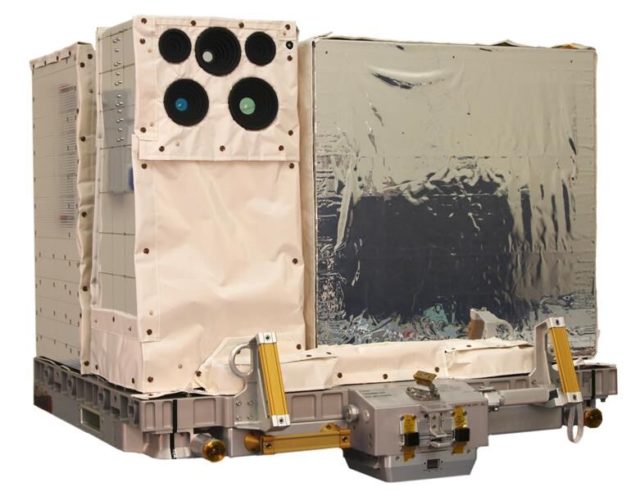Cameras to be sent into space to observe lightning in ‘unprecedented’ detail
The Atmosphere-Space Interactions Monitor will record the inner anatomy of lightning from the International Space Station’s Columbus module.

A unique collection of optical cameras, fast light meters, X-ray and Gamma-ray detectors will be sent into space for the first time to observe lightning in the Earth’s atmosphere from space.
The Atmosphere-Space Interactions Monitor (ASIM) will observe and record the inner anatomy of lightning processes to improve an understanding of the impact of lightning on the atmosphere and contribute to more accurate climate models, scientists say.
The equipment will make it possible to measure bursts of Gamma-rays from thunderstorms and will observe lightning, as well as high-altitude lightning events such as red sprites, blue jets and gigantic jets.

The instruments will run continuously over a two-year period, with the data collected saved and sent to Earth for analysis.
Dr Martin Fullekrug, from the University of Bath, has spent more than 15 years conducting research into lightning and thunderstorms that has contributed towards the development of ASIM.
“I have been researching and investigating space and lightning events for over 15 years and the launch of ASIM feels like the pinnacle of my journey into understanding this phenomenon,” he said.
“This is the first time such a detailed and technologically-advanced measurement device will be flown into space to observe lightning and will hopefully provide us with new knowledge about how lightning is initiated and how the properties of lightning can affect our daily lives in so many different ways.”
The device, weighing 314kg, is roughly a square cubic metre in size.
It will be mounted on the outside of the International Space Station’s (ISS) Columbus module, circulating the globe at 400km altitude.
Scientists say the collection of data from the combination of different cameras and sensors will provide new insight into lightning phenomena.
It will be combined with measurements recorded from geostationary meteorological satellites and ground-based observations from across the world.
Dr Graham Turnock, chief executive of the UK Space Agency said: “This experiment will give scientists all over the world the opportunity to study the effects of powerful lightning storms from the unique vantage point of the International Space Station.
“It’s another exciting moment for international space collaboration and commercial spaceflight, which the UK Space Agency supports through the Government’s Industrial Strategy.”
ASIM is due to be launched on the SpaceX Falcon-9/Dragon rocket from Cape Canaveral in Florida on April 2.
It was built by a team of international partners including the Technical University of Denmark, Danish defence and aerospace manufacturer Terma, the University of Valencia in Spain, the University of Bergen in Norway, the Space Research Center in Poland, and Italian aerospace company OHB-Italia.
The UK Space Agency, through the UK’s investment in the European Space Agency, partly funded the project.





